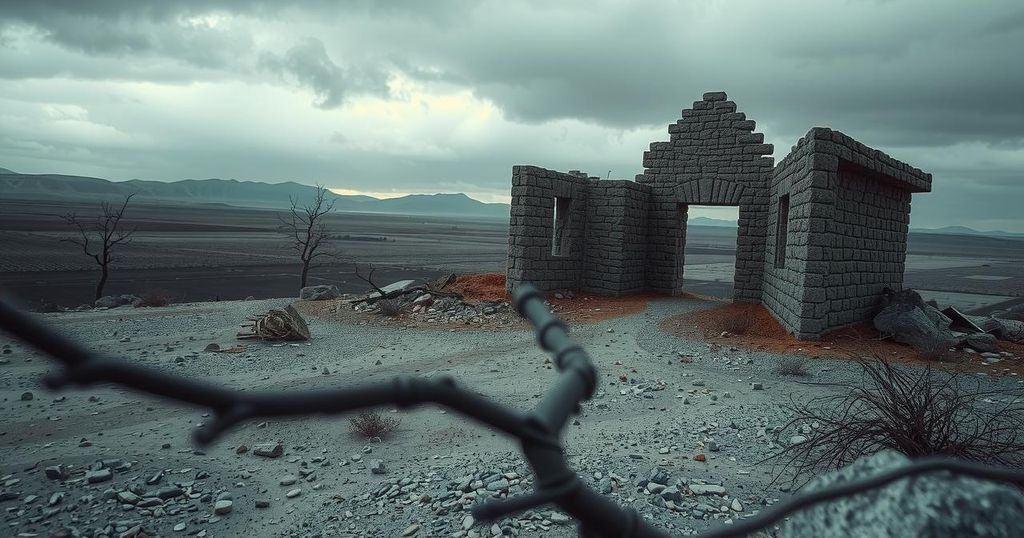World news
AFRICA, CIVIL WAR, DEMOCRATIC REPUBLIC OF CONGO, DISPLACEMENT, DR CONGO, FARDC, FÉLIX TSHISEKEDI, HESHIMA, HUMANITARIAN, HUMANITARIAN CRISIS, ICRC, INTERNATIONAL COMMITTEE OF THE RED CROSS, KIGALI, M23, MYRIAM FAVIER, NDOSHO HOSPITAL, PAUL KAGAME, RWANDA, TANTINE, UN, WAR
Marisol Gonzalez
0 Comments
M23 Rebels Wreak Havoc in Goma, DR Congo: Families Left Devastated
The conflict in Goma, DR Congo, led by M23 rebels with alleged Rwandan support, has resulted in severe civilian casualties and displacements. Individuals like Heshima, who lost his parents, epitomize the suffering endured by many. While life seems to resume, there is pervasive fear among the residents, compounded by a history of violence stemming from the Rwandan genocide and an ongoing struggle for the region’s mineral wealth.
The ongoing conflict in Goma, in the eastern Democratic Republic of Congo, continues to devastate families like that of 13-year-old Heshima, who is recovering from severe injuries after losing both parents to the M23 rebels. These rebels have claimed control over the cities in a region rich with minerals, and are allegedly supported by Rwandan forces in their fight against the Congolese army, known as the FARDC. Heshima’s relative, Tantine, recounts the misery inflicted by the M23, stating, “It was a Sunday. There was fighting between them and the FARDC. They dropped the bomb, and I lost six members of my family.”
Since 2022, the M23 has successfully taken significant territory, asserting their presence as liberators while leaving countless casualties in their wake. Health specialists at Ndosho Hospital struggle to manage the influx of wounded civilians and soldiers, with a UN report estimating the death toll around 3,000. Myriam Favier from the International Committee of the Red Cross highlights the challenges faced by hospital staff, noting that medical supplies were looted early on and lamenting the extent of daily patient admissions that stretched from 100 to just 10 as the fighting subsided.
Despite the violence, life in Goma appears to be returning to a semblance of normalcy, with shops reopening and daily activities resuming. However, the local population remains aware of the M23’s control without overt displays of military presence. Many residents fear reprisal for their opinions, leading to a culture of self-censorship in which caution prevails over expression. An activist mentioned, “This is the most worrying period of Goma’s history. I am afraid, the future is very uncertain.”
While the M23 promises peace and prosperity, issuing an ultimatum to thousands living in refugee camps to vacate, residents like Divine express their terror and hopelessness at being forced to leave. Divine recounted, “They came and told us, ‘You have three days to leave.'” With no stable home to return to, the displaced families face dire conditions amidst uncertainty. Rights groups continue to accuse both the M23 and the Congolese army of severe human rights violations, raising concerns for the future.
The historical context of this conflict stems from the aftermath of the 1994 Rwandan genocide, which saw Hutus fleeing into DR Congo, where issues stemming from the conflict persist. Critics argue that Rwanda’s interest in DR Congo’s abundant mineral resources continues to complicate regional dynamics, with fears that the competition for these resources could provoke another significant conflict. Individuals like Alphonsine, who faces a lengthy journey back to her destroyed home, encapsulate the plight of many, stating, “I came from suffering, and I leave in suffering.”
The conflict in Goma remains a tragic manifestation of suffering for countless families. The M23’s advance has not only resulted in significant fatalities but has also displaced thousands who are now facing daunting challenges as they are coerced to leave their temporary shelters. The historical undertones of this situation, rooted in the Rwandan genocide, and the current quest for mineral wealth in DR Congo may further complicate peace efforts in the region. Without a resolution, the humanitarian crisis will only deepen, leaving many to navigate a bleak future amid uncertainty and fear.
Original Source: www.bbc.com




Post Comment